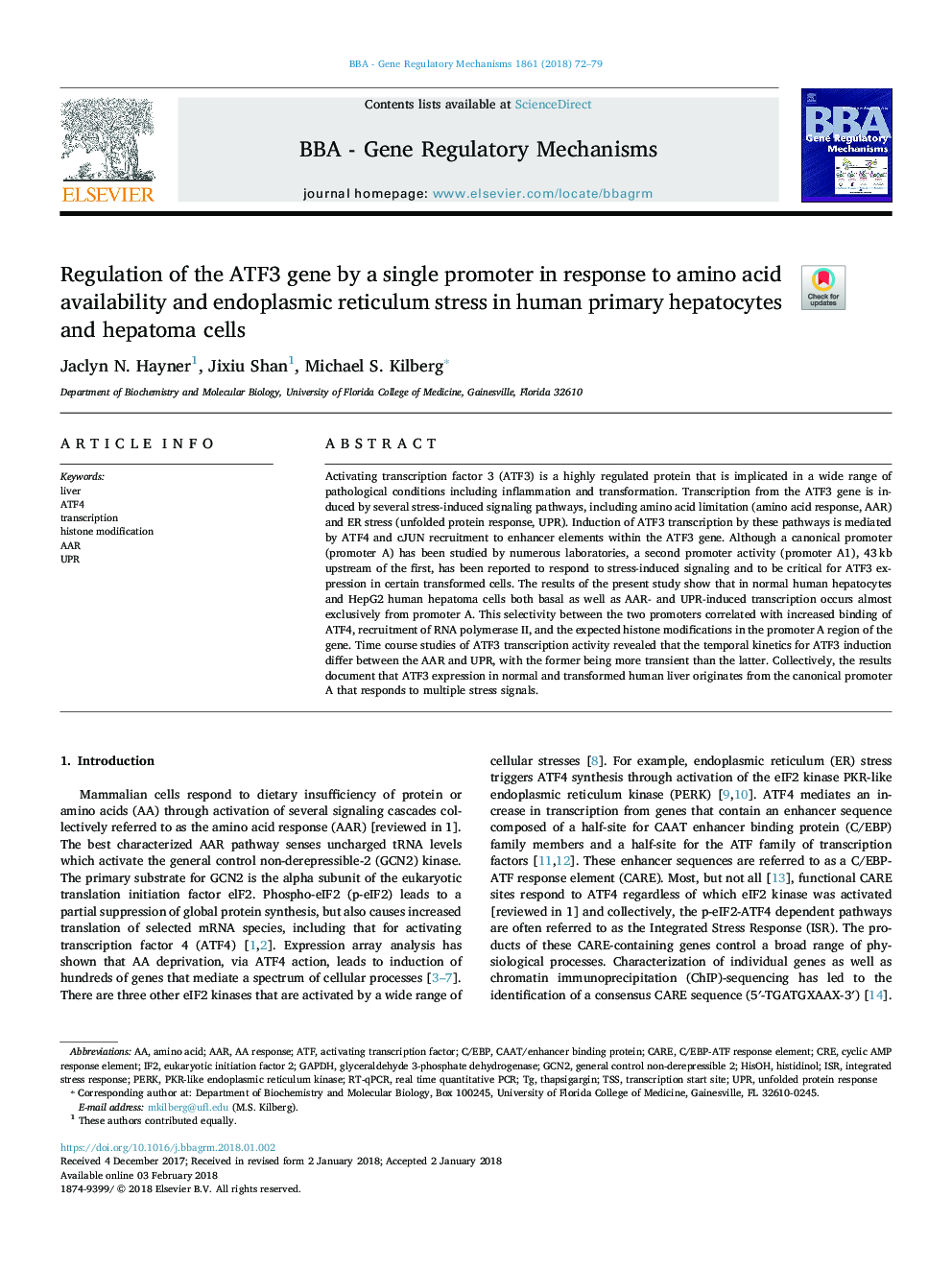| Article ID | Journal | Published Year | Pages | File Type |
|---|---|---|---|---|
| 8300395 | Biochimica et Biophysica Acta (BBA) - Gene Regulatory Mechanisms | 2018 | 8 Pages |
Abstract
Activating transcription factor 3 (ATF3) is a highly regulated protein that is implicated in a wide range of pathological conditions including inflammation and transformation. Transcription from the ATF3 gene is induced by several stress-induced signaling pathways, including amino acid limitation (amino acid response, AAR) and ER stress (unfolded protein response, UPR). Induction of ATF3 transcription by these pathways is mediated by ATF4 and cJUN recruitment to enhancer elements within the ATF3 gene. Although a canonical promoter (promoter A) has been studied by numerous laboratories, a second promoter activity (promoter A1), 43â¯kb upstream of the first, has been reported to respond to stress-induced signaling and to be critical for ATF3 expression in certain transformed cells. The results of the present study show that in normal human hepatocytes and HepG2 human hepatoma cells both basal as well as AAR- and UPR-induced transcription occurs almost exclusively from promoter A. This selectivity between the two promoters correlated with increased binding of ATF4, recruitment of RNA polymerase II, and the expected histone modifications in the promoter A region of the gene. Time course studies of ATF3 transcription activity revealed that the temporal kinetics for ATF3 induction differ between the AAR and UPR, with the former being more transient than the latter. Collectively, the results document that ATF3 expression in normal and transformed human liver originates from the canonical promoter A that responds to multiple stress signals.
Keywords
Related Topics
Life Sciences
Biochemistry, Genetics and Molecular Biology
Biochemistry
Authors
Jaclyn N. Hayner, Jixiu Shan, Michael S. Kilberg,
